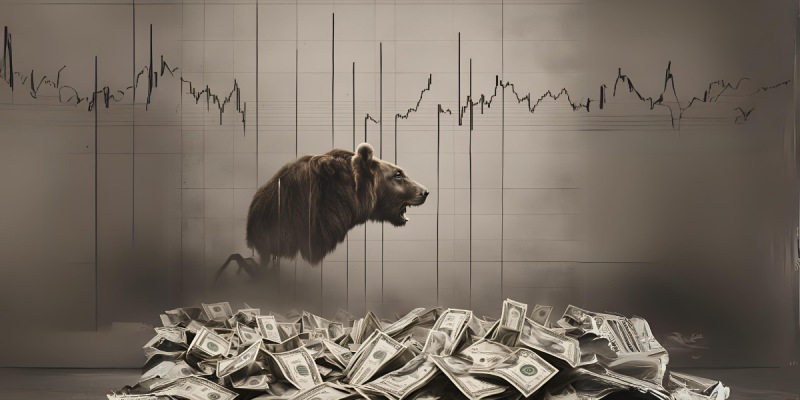In the world of high-speed financial markets, the ability to detect a crash before it happens is as critical as early crash detection in vehicles. Just as new cars come equipped with sensors that alert drivers to impending collisions, the financial industry is now exploring advanced methods to predict and prevent market crashes. But are these systems truly reliable, and can they be trusted to safeguard against the next big financial disaster?
The financial markets are notorious for their complexity and unpredictability. Each day, these markets generate massive amounts of data—2.5 quintillion bytes to be exact—and identifying patterns or anomalies within this sea of information is no small feat. Traditional methods of detecting market anomalies often fall short, particularly when it comes to the speed and scale required in today’s fast-paced environment. As Karthik Rajashekaran, a Senior Cloud Data Engineer and expert in leveraging AI and ML for financial markets in his article points out, “The traditional methods are like driving a car with a rearview mirror; you see the problem only after it has occurred.”
Beyond his corporate career, Karthik’s research has been at the forefront of developing advanced methodologies to tackle this issue. His paper focuses on using artificial intelligence (AI) and machine learning (ML) techniques to not only detect potential market crashes but also implement proactive risk mitigation strategies. These systems, designed to function much like an early warning system in vehicles, aim to provide financial institutions with the critical lead time needed to act before a market crash occurs. One of the key challenges in financial markets is distinguishing between routine fluctuations and signs of an impending crash. According to industry reports, the average cost of a single market crash can reach billions of dollars, impacting not just large corporations but individual investors as well. “The stakes are incredibly high,” Karthik notes. “It’s not just about predicting a crash; it’s about ensuring that the prediction is accurate enough to justify immediate action.”
Karthik’s research utilizes AI/ML models that sift through vast datasets to identify subtle indicators of market instability. For instance, his work demonstrates how AI can uncover hidden patterns in trading data that might otherwise go unnoticed by human analysts. These patterns, often early signs of larger problems, can be crucial in predicting market anomalies. “It’s like finding a needle in a haystack, but with the right tools, you can uncover these needles before they become a serious threat,” Karthik explains.
To illustrate the practical application of his research, Karthik conducted a case study using a credit card fraud detection dataset as a proxy for financial market anomalies. This dataset was chosen due to its complexity and the relevance of fraud detection methods to identifying irregular patterns in financial markets.
In this case study, the data was meticulously preprocessed to ensure its suitability for analysis. This included addressing missing values, normalizing numerical features, and tackling class imbalances, all of which are common challenges in financial datasets. Karthik employed several machine learning models—such as Support Vector Machines (SVM) and Random Forest (RF)—along with deep learning models like Convolutional Neural Networks (CNN) and Long Short-Term Memory (LSTM) networks.
The implementation process revealed several challenges, particularly in managing the vast computational resources required to process such large datasets. Despite these hurdles, the models showed promising results, with SVM achieving the highest accuracy of 98%. Karthik notes, “These models are not just theoretical; they have been tested and proven to work in practical settings. The high accuracy achieved in fraud detection can be indicative of how well these models could perform in early market crash detection.”
But it’s not just about detection—proactive mitigation is equally important. Karthik’s methodology integrates AI/ML models with real-time data processing platforms to develop strategies that financial institutions can deploy immediately when a potential crash is detected. This proactive approach is akin to automatic braking systems in vehicles; once a threat is identified, the system takes action to prevent disaster. “We’re talking about moving from reactive to proactive measures,” Karthik says. “The goal is to not just see the crash coming but to avoid it altogether.”
The results of the case study also highlighted the importance of scalability. Given the ever-increasing volume of data in financial markets, the system’s ability to scale effectively was tested through the use of cloud-based platforms. Karthik leveraged these platforms to ensure that the models could handle large-scale operations without compromising on accuracy or speed. “Scalability is key,” he emphasizes. “A system that works well in a controlled environment must also perform under real-world conditions, where data is being generated at an unprecedented rate.”
The implications of Karthik’s findings are profound. Financial markets are global, interconnected systems, and a crash in one market can have a ripple effect across the world. By enhancing early detection and implementing proactive mitigation strategies, financial institutions can significantly reduce the risk of widespread economic fallout. “In today’s global economy, a crash in one market can quickly spread to others. That’s why early detection is not just a benefit—it’s a necessity,” Karthik asserts.
Karthik’s work also highlights the need for scalability in these detection systems. Given the volume of data processed by financial institutions, any system designed to detect market crashes must be able to scale effectively. “You’re dealing with terabytes of data every second. The system needs to be robust enough to handle this without compromising accuracy,” he explains. This is where cloud-based platforms come into play, offering the necessary infrastructure to support these large-scale operations.
Beyond the technical challenges, there are also ethical considerations to address. The use of AI and ML in financial markets raises questions about data privacy and the potential for bias in algorithmic decision-making. Karthik is keenly aware of these issues and emphasizes the importance of developing transparent and fair systems. “Ethical considerations are not just an afterthought. They need to be built into the design of these systems from the ground up,” he argues.
In conclusion, the ability to detect and prevent financial market crashes is becoming increasingly critical as markets grow more complex and interconnected. Karthik Rajashekaran’s research offers valuable insights into how AI and ML can enhance early detection and proactive mitigation strategies, potentially saving billions of dollars and preventing economic crises. The expanded case study further demonstrates the practical applicability of his models, providing a clear example of how these techniques can be adapted for real-world financial markets. While challenges remain, particularly in scaling these systems and addressing ethical concerns, the advancements in this field are promising. As Karthik puts it, “The future of financial stability depends on our ability to see the crash before it happens—and to take action to prevent it.”





